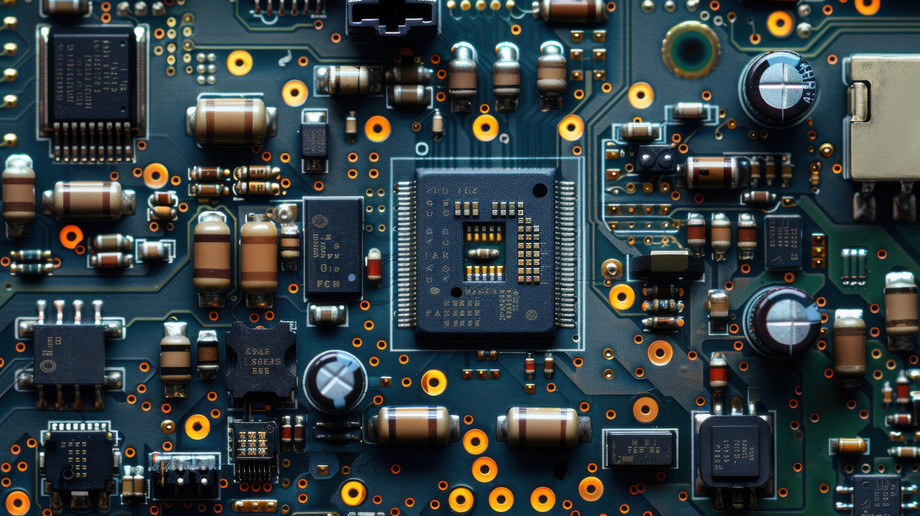In an era where security is paramount, biometric systems are gaining traction as reliable solutions for access control and surveillance. One of the most significant advancements in this field is the integration of embedded camera modules, which enhance the functionality and effectiveness of biometric security systems. These innovations not only improve security measures but also streamline user experiences across various applications, from personal devices to large-scale installations. This blog explores the transformative role of embedded camera modules in biometric security systems, emphasizing their capabilities, benefits, and future potential.
Understanding Embedded Camera Modules
Embedded camera modules are compact camera systems designed for integration into various devices, including smartphones, security cameras, and biometric terminals. These modules typically consist of a camera sensor, lens, image processing unit, and communication interfaces. Their design allows for seamless incorporation into other systems, enabling enhanced features such as high-resolution imaging, real-time processing, and connectivity to networks or cloud services.
Key Features of Embedded Camera Modules
-
High-Resolution Imaging: Modern embedded camera modules offer superior image quality, essential for accurate biometric identification. With resolutions reaching up to 12 MP and beyond, these cameras can capture detailed images, facilitating precise recognition of facial features, fingerprints, and other biometric data.
-
Real-Time Processing: The integration of advanced image processing capabilities allows embedded camera modules to analyze data instantly. This feature is crucial in biometric systems, where quick and accurate identification is necessary for effective security measures.
-
Compact Design: The small form factor of embedded camera modules makes them suitable for diverse applications, from handheld devices to sophisticated security systems. Their design flexibility allows for deployment in various environments without compromising performance.
-
Connectivity Options: Many embedded camera modules come equipped with Wi-Fi, Bluetooth, or cellular connectivity, enabling remote monitoring and data sharing. This connectivity enhances the functionality of biometric systems, allowing for real-time alerts and remote access control.
Applications in Biometric Security Systems
The integration of embedded camera modules in biometric security systems spans multiple sectors, including commercial, residential, and governmental applications. Here are some prominent use cases:
1. Access Control Systems
Embedded camera modules are increasingly used in access control systems, providing a layer of security that traditional methods cannot match. For instance, facial recognition technology leverages these modules to authenticate individuals before granting access to secure areas. The combination of high-resolution imaging and real-time processing enables swift identification, ensuring that only authorized personnel can enter sensitive locations.
2. Smart Home Security
In smart homes, embedded camera modules play a crucial role in biometric security solutions. They are often integrated into smart locks and home monitoring systems, allowing homeowners to utilize facial recognition or fingerprint scanning for entry. This technology not only enhances security but also adds convenience, as users can unlock doors without traditional keys.
3. Financial Institutions
Banks and financial institutions are adopting embedded camera modules for biometric verification at ATMs and branch offices. By implementing facial recognition and fingerprint scanning, these systems minimize fraud risk and streamline customer transactions. The ability to authenticate customers swiftly enhances the overall user experience while reinforcing security measures.
4. Law Enforcement and Surveillance
Law enforcement agencies are increasingly utilizing embedded camera modules in surveillance systems for identifying suspects and monitoring public areas. Advanced analytics, powered by embedded camera technology, can detect suspicious behavior and alert authorities in real time, thereby improving public safety and responsiveness.
Benefits of Embedded Camera Modules in Biometric Systems
The incorporation of embedded camera modules in biometric security systems offers several advantages:
1. Enhanced Accuracy and Security
High-resolution imaging and real-time processing capabilities significantly improve the accuracy of biometric identification. This reduces false positives and negatives, ensuring that only legitimate users gain access. Enhanced security is critical in applications where unauthorized access can lead to significant risks or losses.
2. Improved User Experience
By streamlining the authentication process, embedded camera modules contribute to a more user-friendly experience. Whether it’s a facial recognition system that allows for hands-free entry or a fingerprint scanner that quickly verifies identity, these innovations facilitate smoother interactions.
3. Cost-Effectiveness
Embedded camera modules are often more cost-effective than traditional security measures. Their multifunctionality means that organizations can rely on a single system for multiple tasks, such as access control and monitoring, thereby reducing overall security expenditures.
4. Scalability and Flexibility
The modular design of embedded camera systems enables easy scalability. Organizations can start with a basic setup and expand as needed, incorporating additional cameras and features over time. This flexibility is particularly beneficial for growing businesses that require adaptable security solutions.
Future Trends in Embedded Camera Module Technology
As technology advances, the capabilities of embedded camera modules in biometric systems will continue to evolve. Some emerging trends include:
1. AI and Machine Learning Integration
The integration of artificial intelligence (AI) and machine learning algorithms will further enhance the capabilities of embedded camera modules. These technologies can improve image processing and recognition accuracy, adapting to new threats and user behaviors in real time.
2. Enhanced Privacy Features
With growing concerns about privacy and data security, future embedded camera modules will likely incorporate advanced encryption and anonymization techniques. These features will ensure that biometric data is securely stored and transmitted, enhancing user trust in biometric systems.
3. Expanded Applications
The versatility of embedded camera modules will lead to their adoption in new applications, such as healthcare for patient identification, retail for personalized customer experiences, and transportation for enhanced security protocols.
Conclusion
Embedded camera module innovations are revolutionizing biometric security systems, providing enhanced accuracy, improved user experiences, and cost-effective solutions across various applications. As the technology continues to advance, its integration into security systems will only deepen, making biometric security a cornerstone of modern safety protocols. Organizations looking to enhance their security measures must consider adopting these cutting-edge technologies to stay ahead in an increasingly complex security landscape. By embracing embedded camera modules, they can ensure a safer, more secure future for their operations and clients.
To Know More About embedded camera modules

